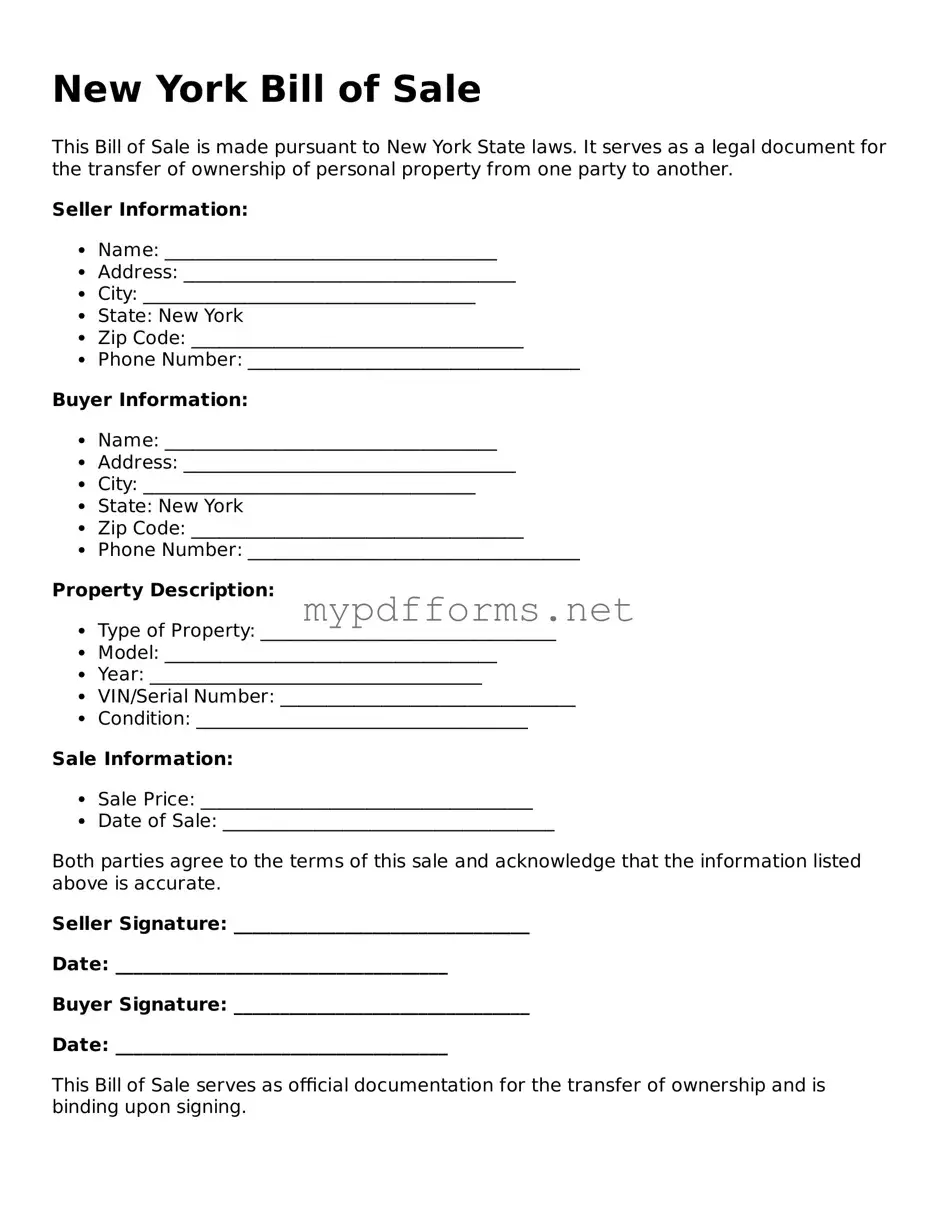The New York Bill of Sale form is similar to a Vehicle Title Transfer form. This document is used when ownership of a vehicle changes hands. Like the Bill of Sale, it provides essential information about the buyer, seller, and the vehicle itself, including the Vehicle Identification Number (VIN). Both documents serve as proof of ownership and are necessary for registering the vehicle under the new owner's name.
Another document similar to the Bill of Sale is the Personal Property Receipt. This receipt acknowledges the transfer of personal property from one party to another. It contains details about the item being sold, the purchase price, and the date of the transaction. Much like the Bill of Sale, it serves as evidence of the sale and can be used for record-keeping or tax purposes.
A Lease Agreement also shares similarities with the Bill of Sale. While a Lease Agreement is primarily used for rental situations, it outlines the terms under which one party allows another to use their property. Both documents require the identification of the parties involved and the description of the property, ensuring clarity in ownership and usage rights.
The Gift Receipt can be compared to the Bill of Sale as well. This document is used when property is given as a gift rather than sold. It details the item being transferred and confirms the donor's intent to give it away without expecting payment. While the Bill of Sale involves a financial transaction, the Gift Receipt emphasizes the voluntary nature of the transfer.
The Purchase Agreement is another document that resembles the Bill of Sale. This agreement outlines the terms and conditions of a sale between a buyer and a seller. It includes details about the item, payment terms, and any warranties or guarantees. Both documents are crucial for protecting the interests of both parties and ensuring a smooth transaction.
In addition to the various forms discussed, the California Employment Verification form is crucial for confirming an employee's work history and job details. This document ensures that accurate information is shared for numerous employment purposes, and to streamline the process, you can easily obtain the Employment Verification form.
A Warranty Deed is similar in that it transfers ownership of real property. This legal document guarantees that the seller has the right to sell the property and that it is free from any liens or claims. While the Bill of Sale typically deals with personal property, both documents confirm the transfer of ownership and provide protection to the buyer.
The Assignment of Contract is another comparable document. This form allows one party to transfer their rights and obligations under a contract to another party. Like the Bill of Sale, it requires the identification of all parties involved and details about the subject matter. Both documents ensure that the new party has the authority to act on behalf of the original party.
The Release of Liability form bears some resemblance to the Bill of Sale. This document is used to protect one party from legal claims by another party after a transaction. It is often signed when property is sold or transferred. Both documents emphasize the importance of clarity and mutual agreement between the parties involved.
Lastly, a Promissory Note can be seen as similar to the Bill of Sale in that it involves a financial transaction. This document outlines a borrower's promise to repay a loan to a lender, detailing the amount borrowed, interest rate, and repayment schedule. Both documents require clear terms and conditions to protect the interests of the parties involved.
